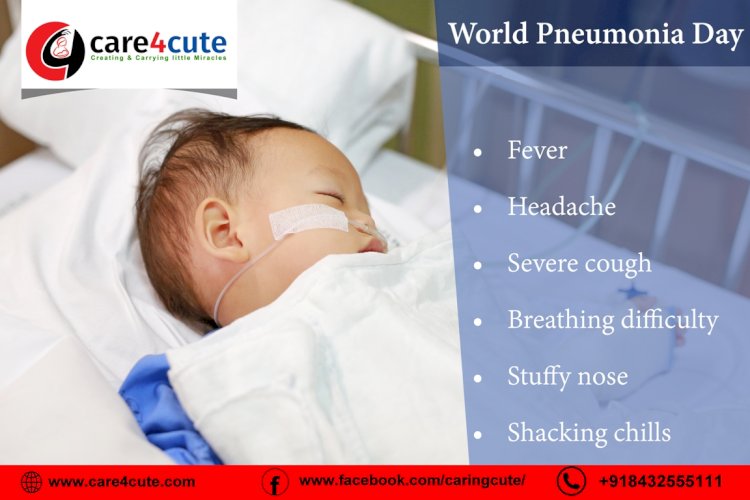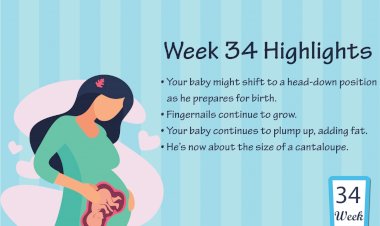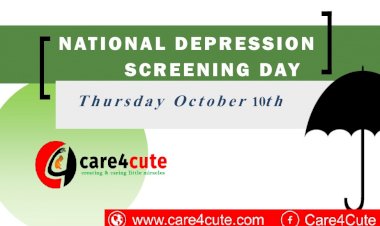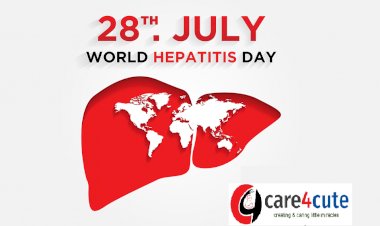November 12 - World Pneumonia Day 2019
World Pneumonia Day is annually held on November 12 to raise awareness of pneumonia - an acute respiratory infection across the globe.

World Pneumonia Day is observed every year on November 12th to raise awareness of pneumonia as a child health issue and to prevent child death from pneumonia. This significant day is observed to promote interventions to protect against this disease.
Every year World Pneumonia day has a theme. This year the theme of world pneumonia day is “Stop Pneumonia: Invest in Child Health”.
Pneumonia is one of the world-leading causes of death in children under five years of age. Although vaccines and other preventable efforts are decreasing the burden of this disease but still more efforts are required to eliminate this problem. Those children who are living in poor communities and countries have a high risk of pneumonia. Every child regardless of where he is born deserves access to life-saving vaccines and medication.
What is pneumonia?
Pneumonia is an acute respiratory infection that affects one or both lungs. This infection causes inflammations in the air sacs in the lungs, which is called alveoli. The alveoli are filled with pus and fluid which makes breathing painful and reduce the oxygen level in the human body.
Causes of Pneumonia:-
Many different germs and factors can cause pneumonia. Those are given below:-
• Bacteria
• Viruses
• Fungi
• Various chemicals
• Mycoplasma
Symptoms of pneumonia:-
• Fever
• Headache
• Chest pain
• Loss of appetite
• Severe cough
• Joint pain
• Fatigue
• Breathing difficulty
• Breathing with grunting and wheezing sounds
• Vomiting
• Stuffy nose
• Shacking chills
• Less activity
• Dehydrations
How to transmission Pneumonia:-
Pneumonia can be spread in a number of ways. These are as follows:-
• Inhaling the Infection - Viruses and bacteria are commonly found in a child’s nose or throat. They are spared via air droplets from cough or sneeze and can infect the lungs during inhalation.
• Through the mouth and eye - This can happen when a person touches a surface that an infected person has coughed and sneezed on.
• Pneumonia may spread through blood.
How Pneumonia is diagnosed?
Usually, Doctors make a pneumonia diagnosis by physical examination. Doctors will check child breathing patterns, Vital signs and listen to lungs air sound. They might prescribe X-Ray chest and blood investigation to make a diagnosis.
Risk factors of pneumonia:- Mostly healthy children can fight the infection with their natural defenses, but those children who have a weak immune system because of malnutrition or undernourishment, have a high risk of developing pneumonia. Infants, who are not exclusively breastfeeding are also susceptible to pneumonia.
Environment factors like indoor air pollution, parental smoking, and crowded home also increase the risk of developing pneumonia in children.
How is Pneumonia Treated?
• Most cases of pneumonia caused by viruses don’t require an antibiotic. However, pneumonia caused by bacteria is treated with antibiotic. The use of antibiotic depends on the type of bacteria.
• A child might need to be admitted to a hospital if he is having a high-grade fever, breathing problems, need oxygen therapy, cannot take oral medicine.
How to prevent pneumonia?
• Some type of pneumonia can be prevented by vaccines. Kids usually get immunizations against pneumococcus, whooping cough and measles which is the most effective way to prevent pneumonia.
• Adequate nutrition is the key of improving the child immune system.
• Exclusive breastfeeding for the first 6 months of life.
• Maintain proper hygiene in crowded homes.
• Encouraging frequent hand washing with soap and water.
• Reduction of household air pollution.
In which condition you should call your Doctor:
Call your doctor if your child has any of the signs and symptoms
- Having breathing difficulty
- Bluish or gray color of lips and fingernails.
- Having high-grade fever
- Noisy breathing
- Spasmodic cough



































Comments (0)